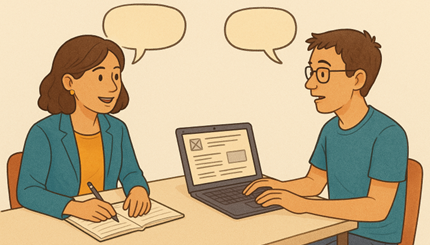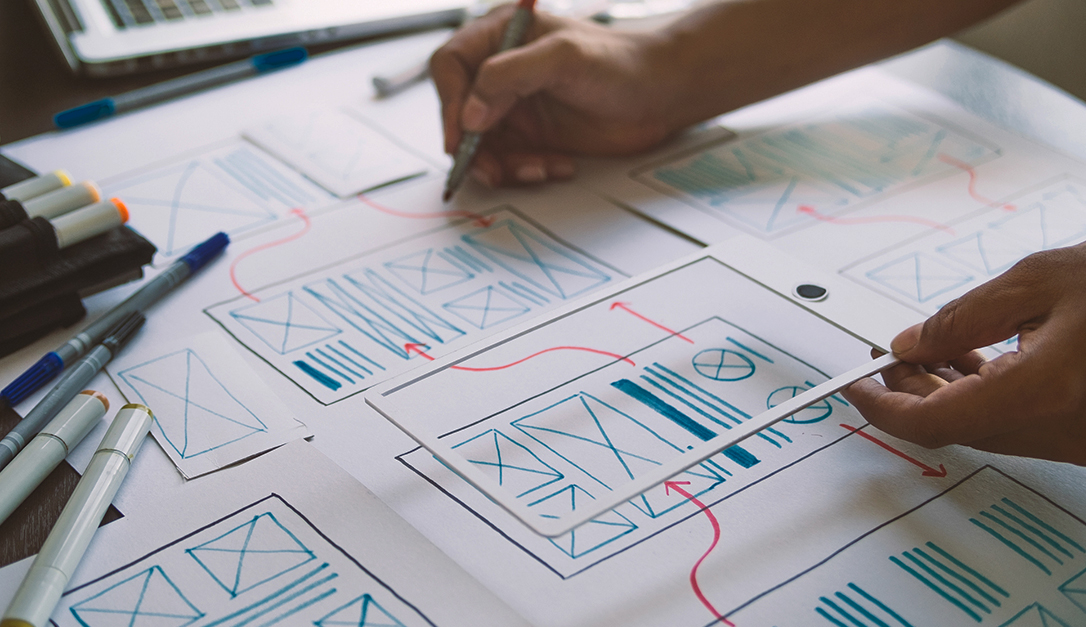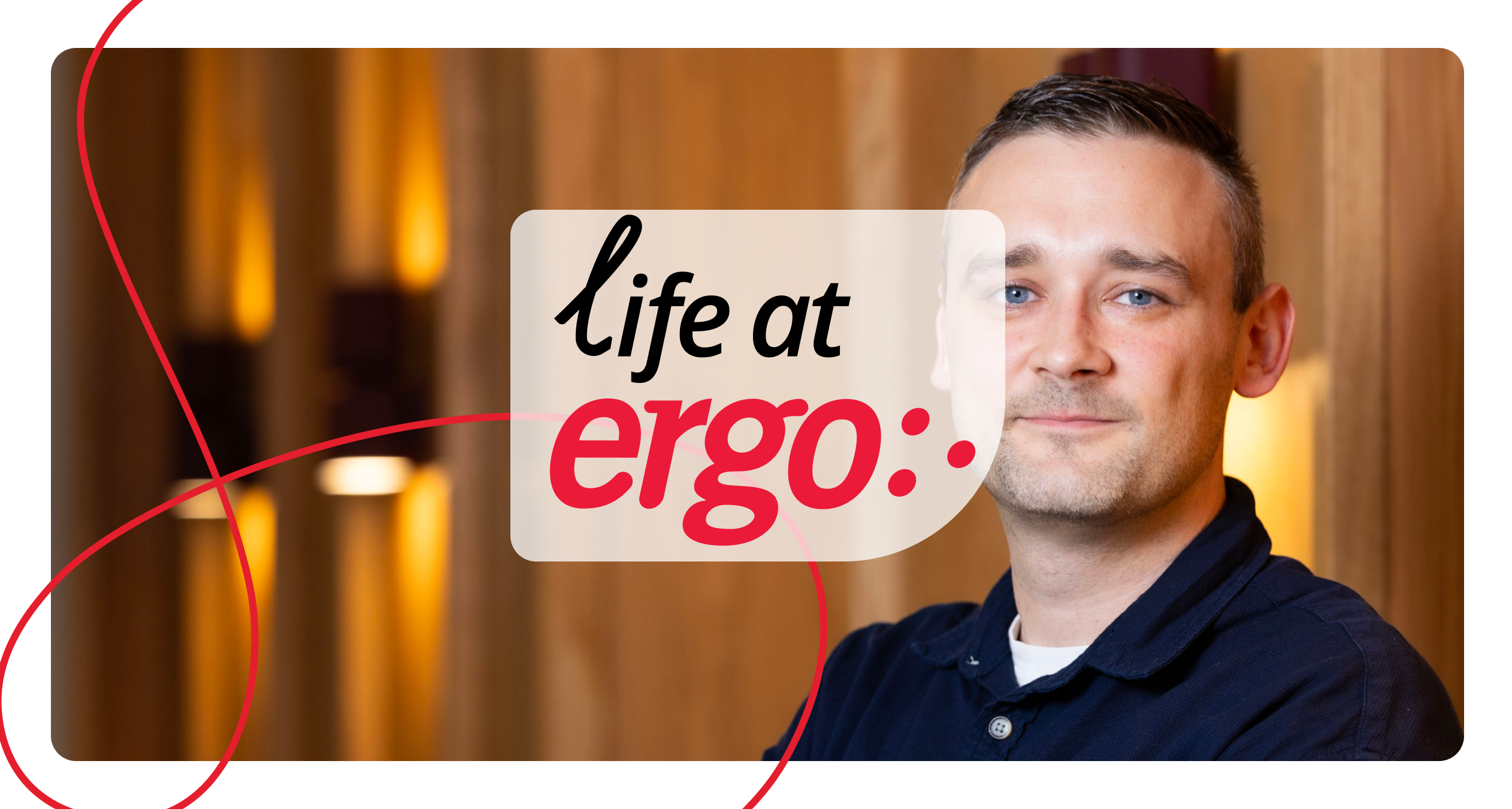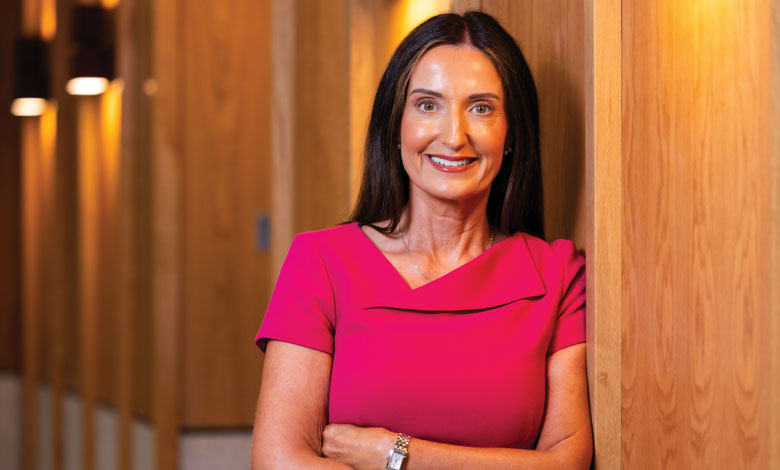2025 has been a period of rapid change for the IT industry, technology is advancing fast and we’re trying our best to keep up. It can be hard to focus on what’s important in times like these, there’s a constant feeling of falling behind the latest innovation. The advent of advanced AI language models and AI generated content is making us question our methodologies and strategic focus, causing a period of indecision as everyone waits for the clarity of what comes next. You won’t find clarity about the next big AI innovation in this blog, but you might find something even more important, and something that you can be sure will never change. At the heart of technology is people, people are the reason we create IT systems, people buy our products, interact with our applications and dictate our strategy. So, it’s clear to see that if we focus on people aka, our users, our customers we will find the clarity in all the noise. So why invest in UX Design in 2025, because UX Design is about understanding people.
As coined by the UX Design Institute:
“UX is how people feel when using our products, systems or services.”

Figure 1. Usability Testing Session – Talking to people about technology
But what do we mean by feel, that can mean a lot of things, let’s be a little more specific: when people use our product, system or service we want them to feel, in control, they should feel confident in what they’re doing and it should make the user feel smart and understood, as if in a comfortable space where everything is going as expected with no surprises and also they trust that their work is going to lead to a positive outcome.
On the other hand, let’s consider the opposite experience; they feel like they have no control, they don’t feel confident about the system and generally they don’t think the process they’re engaging with is going to work out well. A bad user experience makes people feel stupid and erodes trust in our products, brands or new business processes.
Sometimes it can help to imagine these kinds of feelings in relation to everyday objects which can also generate similar feelings. Take a microwave for instance, an everyday device which has an everyday purpose: heat up my food. On more than one occasion I’ve found myself staring at the array of buttons on the average microwave, searching through the features, defrost modes, power levels, timers, even a specific button to cook an entire roast chicken, and all interactions fed back to me via what looks like a school calculator screen, confused as to where to begin. This is especially embarrassing in a workplace canteen with two or three employees are waiting impatiently behind you. Usually ending up with molten lava for lunch or building up the courage to ask a fellow employee for some help.

Figure 2. Tricky microwave interface
These experiences often make me thing of famous usability expert Steve Krug’s first law of usability
“Don’t make me think”
He says “I should be able to get it – what it is, how to use it – without expending any effort thinking about it”
So, how did we get here? Why do everyday items often have to be explained and demo’ d to be used? Why can’t they be intuitively figured out by people without instruction? One among many factors is that much of the design of these systems is done by engineers, and engineers are experts in technology but don’t understand the nuances of how people interact with technology. Engineers are trained to think logically, and they have a deep understanding of how the technology works and with this knowledge they make assumptions of how users will interact with it. But therein lies the problem, their end-users are people and people aren’t logically, and they don’t understand how the machine or software works. And time and again this results in the disconnect between the technology and the users it was designed for.
The feelings of frustration generated when trying to use a poorly designed microwave are no different to trying to use a poorly designed business application, oftentimes its worse, bad UX in the workplace wastes your time and energy and it can lead to a build-up of what we call UX debt. It’s the hidden cost of bad design decisions that lead to poor usability for end-users. Users become frustrated and disengage and abandon processes. They share their negative experience with others, bringing down confidence in the product, system, service, brand and or teams delivering said design, leading to stifled progress and making people resistant to adoption.

Figure 3. We’ve all been there – badly designed forms/ applications
This can also lead to rocketing development costs during expensive reworks or investment in complex training programmes and documentation so people can navigate and engage with poorly designed processes.
To conclude this section, great UX isn’t just about making users feel good. If we invest and engage in the UX Design process from the start and throughout our development projects for our products, systems or services we can ensure that our users feel in control, confident, smart and trust in what we deliver from the very beginning, dodging inefficient systems, complex training programmes, huge IT support backlogs, expensive reworks and frustrated users.
What is the UX Design Process?
“Focus on the user and all else will follow” – Google Design’s guiding principle
The UX Design Process is about people, put simply, if we are designing a business application for people, we need to talk to them and observe them to figure out what they need the application to do. The answer to which must be the guiding principle of the design. If the application doesn’t do what people need it to do or it’s so badly designed that people can’t figure out how to use it, its dead-on arrival. That’s the first hurdle. Additionally, when we have designed a business application based on what people need it to do, we need to test it with those people and observe them using it. Referring to what I said regarding engineers’ assumptions when designing technology, designers need to be aware of our biases and assumptions too, we cannot assume to understand how people will use our designs. To quote American cultural anthropologist and author Margaret Mead “What people say, what people do, and what they say they do are entirely different things.”
Observing users while they use our products, systems or services is the most effective way of challenging our assumptions and learning how to improve usability. The method UX designers use is called usability testing, and it can be done at any time during the development cycle but preferably it should be done at the beginning using wireframes, mock-ups or prototypes before any expensive development starts.
A great example of the power of user-testing and observational research comes from when Heinz were studying how families interacted with their top product: ketchup. They observed families in their home environment to see how ketchup was being used. Surprisingly they found that most persistent consumer of the product were children. Back then the Heinz bottles were glass and to get the ketchup out you had to lift a bottle upside down and smack on the bottom. Of course, children doing this often caused a big mess at the dinner table and a lot of wasted ketchup. So, from observation Heinz figured out that the top user of their product wasn’t getting access to the product. With this in mind, they worked and iterated on new bottle designs and came up with the easy squeeze bottle, the bottle you would recognize today, it’s made from plastic, and you can squeeze and easily control the amount of ketchup that comes out, even little hands could operate it. Heinz sells over 600 million bottles of ketchup annually, and the squeeze bottle format became a major contributor to that volume.

Figure 4 Heinz Easy-Squeeze Bottle
Why invest in UX Design in 2025?
So, we talked about what UX is. We talked about how it’s important that the everyday objects that we use are intuitive and accessible for people. And that they don’t become everyday frustrations. How it’s important that our engineering and technical teams are supported in equal measure by design teams who are given the time and space to talk to users to ensure that the technology we create is designed for them, and that are product systems and services aren’t engineered first and designed never.
We talked about what UX methodology can look like at a high level from our Heinz story. Stories like this show us that observing users interacting with our product systems and services can help us identify those critical insights that indicate to us when to pivot when to innovate and when our product systems and service aren’t working for users. So, investing in UX Design in 2025 is as important as ever, we need to work with UX teams to gather research by talking to and observing our users so we can keep up with their evolving behaviors and expectations and design great software to meet them.
For more information on how a UX team operates or how they can help your business visit our UX & Visual Design service page.

Enhance your digital presence today!
Contact us to learn how we can help you create outstanding user experiences.
Contact Us





